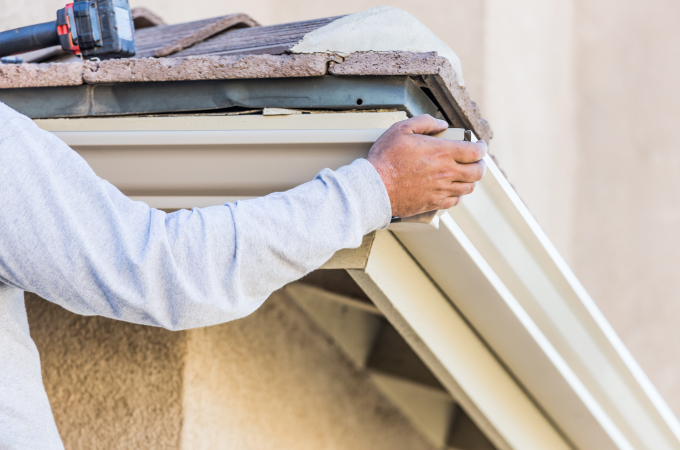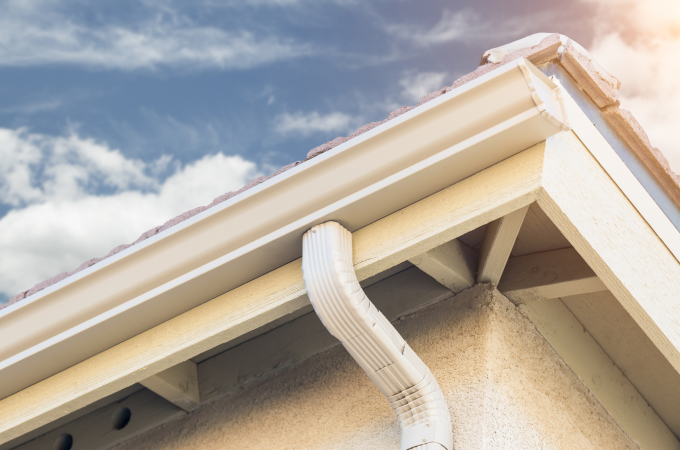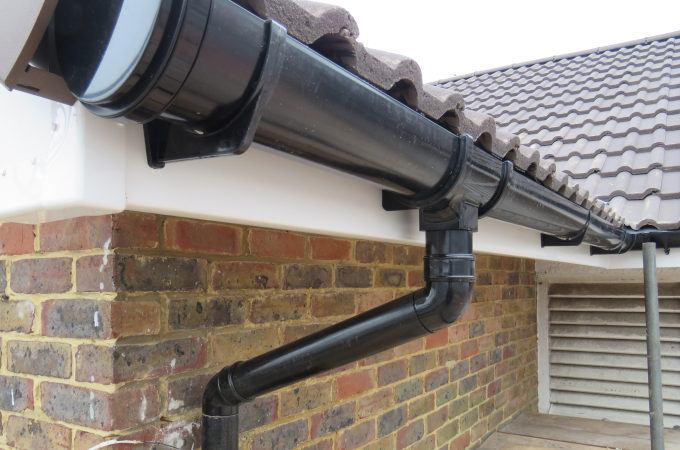Over the life of your gutters, there’s a very good chance you will need to clean them (more than once) and perhaps even perform a few repairs. Of all the things that could possibly go wrong, rust is one of the most common — and unfortunately, it is also one of the worst things to go wrong. When left unchecked, rust can take over and render your gutters virtually useless. The tips below will help you keep rust in check and prevent unnecessary replacement.
What Causes Rust in the First Place?
Rust is the result of a chemical reaction between iron and oxygen when it meets water or moisture in the air. This combination results in the reddish-colored compound known as iron oxide. Most commonly, rust forms in gutters when water pools inside them, either due to improper installation, improper slope over time, or a clog inside the gutters that allows water to stand rather than flow freely. Some materials, including steel, may begin to rust over time from simply being exposed to humidity.
How to Treat Rust Spots on Your Gutters
If you’ve noticed hints of rust on your gutters, it’s important to take quick action to prevent its spread. Once rust starts, it will spread very quickly, and it can eat completely through the metal, rendering your gutters useless. If you see only a small amount, wash the area thoroughly with a common household dish detergent, and scrub the rust away with a stiff-bristled brush. You may also use a crumpled piece of aluminum foil to remove any trace amounts of rust.
Once you have effectively removed any visible rust, the next step is to prime the material to prevent any future issues. There are numerous metal primers on the market that are designed for rust prevention, so choose a solid product that gets excellent reviews. If the rust has already corroded through the gutter, then your best bet is to replace that specific section. Though this may be a fairly simple DIY job for some, it is usually best to call on a professional to ensure the proper slope — and to prevent the rust from reoccurring in the future.
Preventing Rust in the First Place
Of course, the best way to treat a rusty gutter is to prevent it in the first place. Unfortunately, this is easier said than done. While there is little doubt that steel gutters are far stronger than their aluminum counterparts, they are far more prone to rust, and not ideal for those living in especially rainy or humid climates. Aluminum is a far better choice in this case, as it does an excellent job of resisting rust and corrosion. You may also opt for other materials, including Galvalume and galvanized steel. These materials combine the strength of steel with the outstanding corrosion and rust resistance of aluminum.
Rusty gutters are certainly problematic, and they may even be indicative of a bigger issue, including clogs and sagging gutters. Choosing the right material for your climate, ensuring a proper installation, and treating rust spots as they occur is the trick to making sure your gutters last as long as possible.
 Contractors
Contractors



